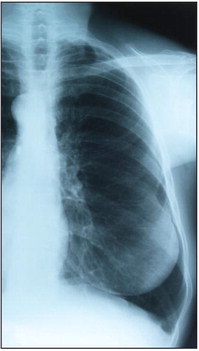Common respiratory ailments


Oxygen is essential to life. The respiratory system works tirelessly to provide fresh oxygen to the body and ensure that all metabolic activities can occur unhindered. The respiratory system is what makes the inhalation and exhalation of air possible, and it’s a responsible for the distribution of oxygen throughout the body.
The respiratory system is a network of organs and tissues that help a person breathe. In addition to facilitating the absorption of oxygen from the air, the respiratory system cleans out waste gases like carbon dioxide. In a healthy person, the respiratory system functions like a well-oiled machine. But that same system is sometimes hampered by illness, allergies and infections, according to the Cleveland Clinic. With so much riding on a healthy respiratory system, it can help to learn about some of the more common conditions that can affect it.
Asthma
Asthma is a chronic inflammatory disease caused by narrowed airways affected by inflammation. Asthma causes breathing difficulties, coughing, wheezing, and other symptoms. Most people need to take preventive medicines to control symptoms.
COPD
Chronic obstructive pulmonary disease is comprised of chronic bronchitis and emphysema. Bronchitis is when the lining of the bronchial tubes become inflamed and irritated. Swelling may cause an abundance of mucus. Emphysema occurs when the tiny air sacs (alveoli) become damaged and less flexible. This reduces the alveoli’s ability to move oxygen and other gases, which adversely affects breathing, according to Verywell Health.
Influenza
Influenza, also known as the flu, is a viral illness that can produce a number of symptoms. The flu viruses can be inhaled or brought into the body by touching items that contain the virus. Mild fever, runny nose, cough, fatigue, and sore throat are common symptoms of influenza. While most people recover, the Mayo Clinic warns that flu complications can be deadly.
COVID-19
SARS-CoV-2 is the virus responsible for causing COVID- 19, which was discovered in the winter of 2019. It is a highly infectious illness caused by a coronavirus. It is spread from person to person, and has caused millions of deaths around the world as well as lasting health problems, according to Johns Hopkins Medicine. Depending on the individual, the effects of COVID-19 can be mild or severe. Because the virus mutates easily, researchers continue to develop new vaccines to help boost defense against it. Symptoms appear within two to 14 days of exposure to the virus. A person infected with the coronavirus is contagious to others for up to two days before symptoms appear, and they remain contagious to others for 10 to 20 days, depending on their immune system and the severity of their illness.
Tuberculosis
TB is a contagious and potentially life-threatening infectious disease caused by the bacterium mycobacterium tuberculosis, which is spread through the air. The CDC says TB is preventable and treatable in most cases. Infection control practices can help reduce TB transmission.
Pneumonia
With pneumonia, a virus, bacteria or another infectious agent causes alveoli to fill with fluid or pus, affecting breathing and gas exchange. Pneumonia symptoms may be mild and not affect daily activities, while others can be severe and require hospitalization.
Cystic fibrosis
This is a genetic condition that creates very thick mucus in the body, which can cause both breathing and digestive problems. Blockages from thick mucus can trap harmful bacteria and lead to infections, says the Mayo Clinic.

